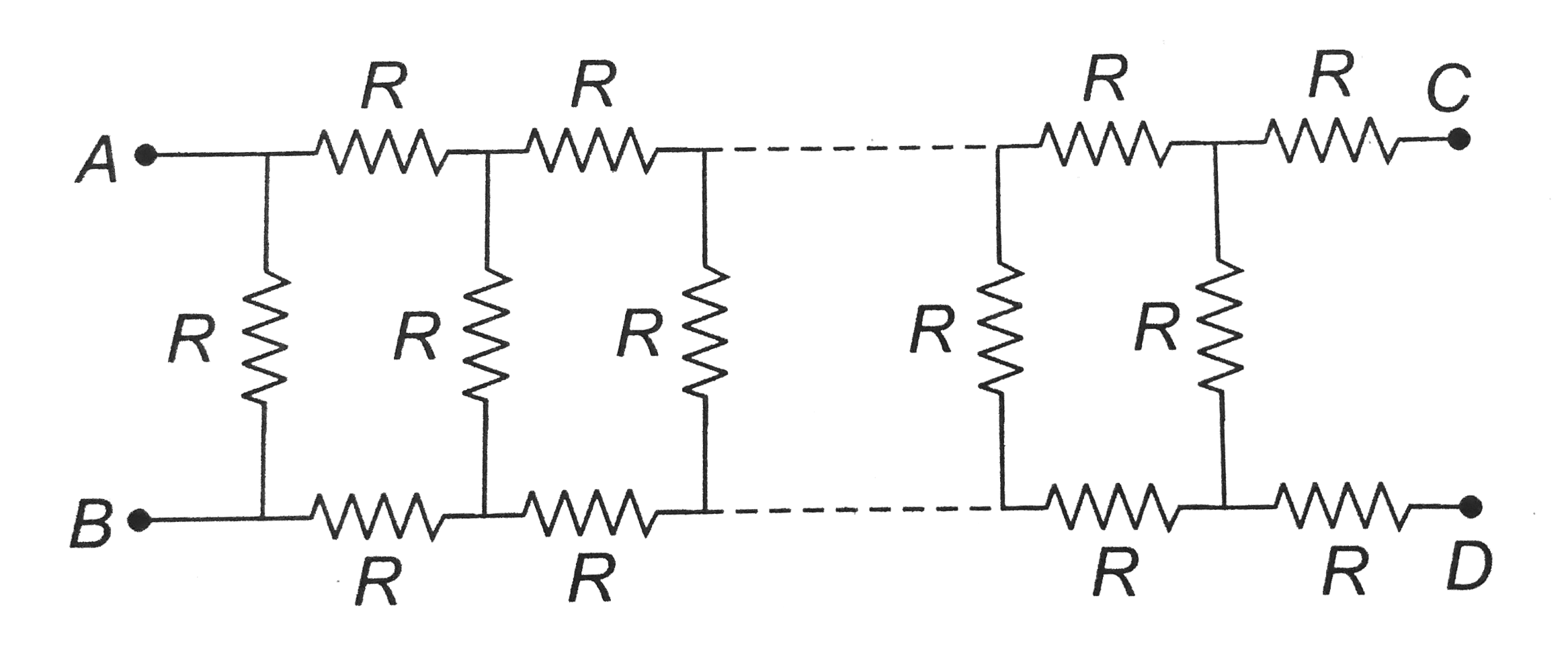The resistance of a resistor is reduced to half of its initial value. In doing so, if other parameters of the circuit remain unchanged, the heating effects in the resistor will become
(A) two times
(B) half
(C) one - fourth
(D) four times
To solve the problem, we need to analyze the relationship between resistance, current, and the heat generated in the resistor. We will use Joule's law, which states that the heat (H) generated in a resistor is given by the formula:
H=I2RT
where:
- H = heat generated,
- I = current flowing through the resistor,
- R = resistance of the resistor,
- T = time for which the current flows.
1. Identify Initial Conditions:
Let the initial resistance be R. The initial heat generated in the resistor when current I flows for time T is:
Hinitial=I2RT
2. Change in Resistance:
According to the problem, the resistance is reduced to half of its initial value. Therefore, the new resistance R′ is:
R′=R2
3. Calculate New Heat Generated:
With the new resistance, the heat generated H′ when the same current I flows for the same time T is:
H′=I2R′T=I2(R2)T
4. Simplify the Expression:
Substituting R′ into the heat equation gives:
H′=I2R2T=12(I2RT)
5. Compare New Heat with Initial Heat:
From the above, we can see that:
H′=12Hinitial
This means the new heat generated is half of the initial heat generated.
6. Conclusion:
Therefore, the heating effect in the resistor will become half of its initial value.
Final Answer:
The correct option is (B) half.
- H = heat generated,
- I = current flowing through the resistor,
- R = resistance of the resistor,
- T = time for which the current flows.
Let the initial resistance be R. The initial heat generated in the resistor when current I flows for time T is:
Hinitial=I2RT
According to the problem, the resistance is reduced to half of its initial value. Therefore, the new resistance R′ is:
R′=R2
With the new resistance, the heat generated H′ when the same current I flows for the same time T is:
H′=I2R′T=I2(R2)T
Substituting R′ into the heat equation gives:
H′=I2R2T=12(I2RT)
From the above, we can see that:
H′=12Hinitial
This means the new heat generated is half of the initial heat generated.
Therefore, the heating effect in the resistor will become half of its initial value.
The correct option is (B) half.
Similar Questions
If earth radius reduces to half of its present value then the time period of rotation will become:
View SolutionIf diameter of earth becomes half of its present value and its mass becomes four times its present value, how would the weight of any object on the surface of earth be affected ?
View SolutionThe radius of a wire is decreased to one-third. If volume remains the same, the length will become 3 times (b) 6 times (c) 9 times (d) 27 times
View SolutionIf the side of a square are halved, then its area
(a) remains same
(b) becomes half
(c) becomes one fourth
(d) becomes double
View SolutionA certain radioactive material is known to decay at a rate proportional to the amount present. If initially there is 50 kg of the material present and after two hours it is observed that the material has lost 10% of its original mass, find () and expression for the mass of the material remaining at any time t, (ii) the mass of the material after four hours and (iii) the time at which the material has decayed to one half of its initial mass.
View SolutionA certain radioactive material is known to decay at a rate proportional to the amount present. If initially there is 50 kg of the material present and after two hours it is observed that the material has lost 10% of its original mass, find () and expression for the mass of the material remaining at any time t, (ii) the mass of the material after four hours and (iii) the time at which the material has decayed to one half of its initial mass.
View SolutionA resistance of 20Ω is connected to a source of alternating current rated 110V,50Hz. Find (a) the rms current, (b) the maximum instantaneous current in the resistor and (c) the time taken by the current to change from its maximum value to the rms value.
View SolutionWhen volume of system is increased two times and temperature is decreased half of its initial temperature, then pressure becomes ………….
View SolutionIn the figure, the value of resistors to be connected between C and D so that the resistance of the entire circuit between A and B does not change with the number of elementary set used is

View SolutionIf the diameter of the earth becomes two times its present value and its mass remains unchanged then how would the weight of an object on the surface of the earth be affected ?
View Solution
